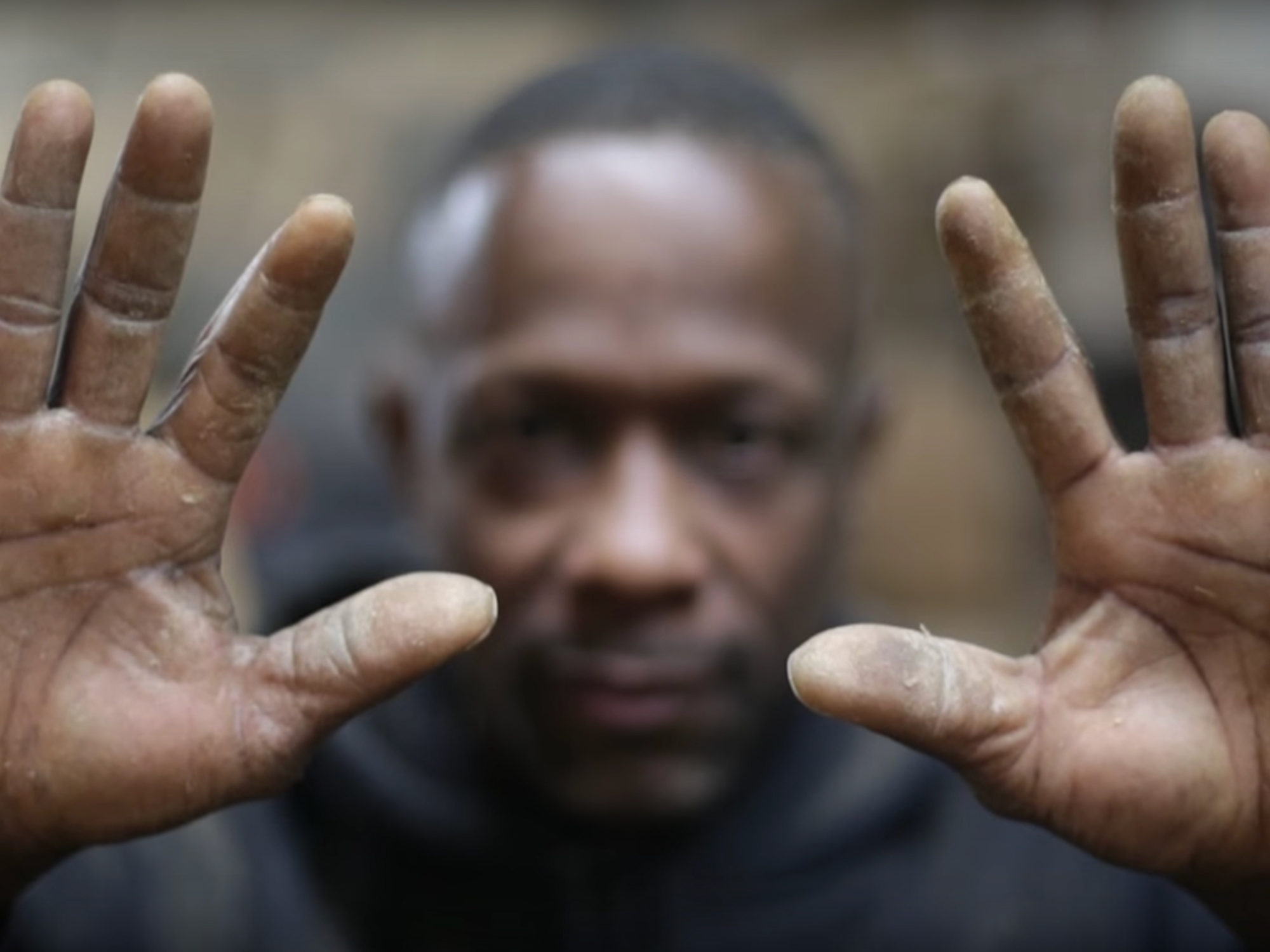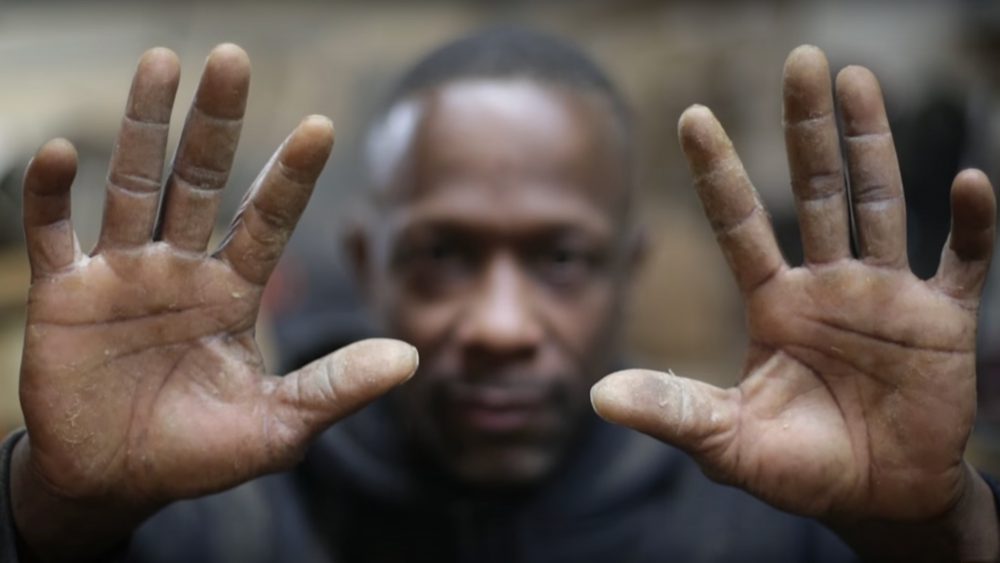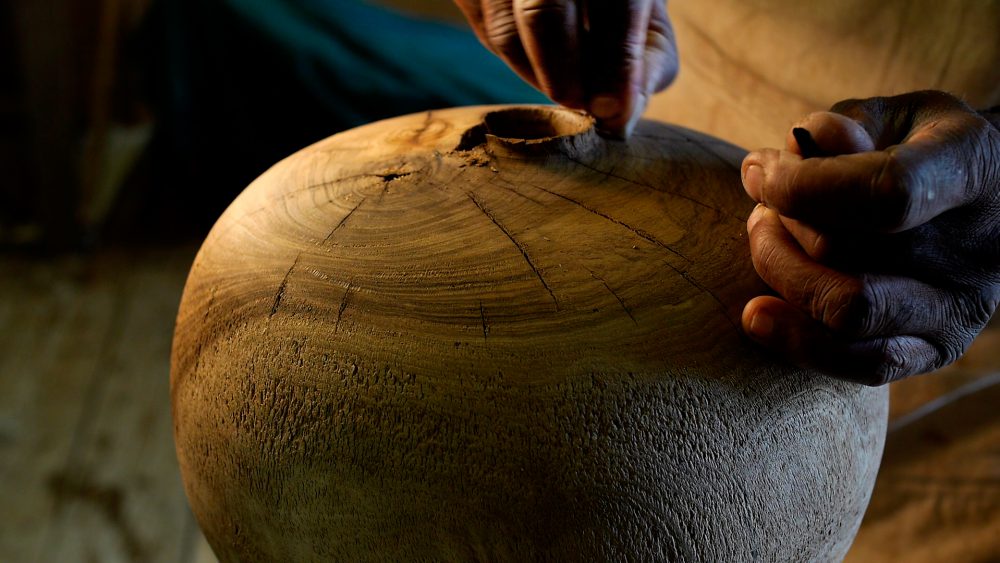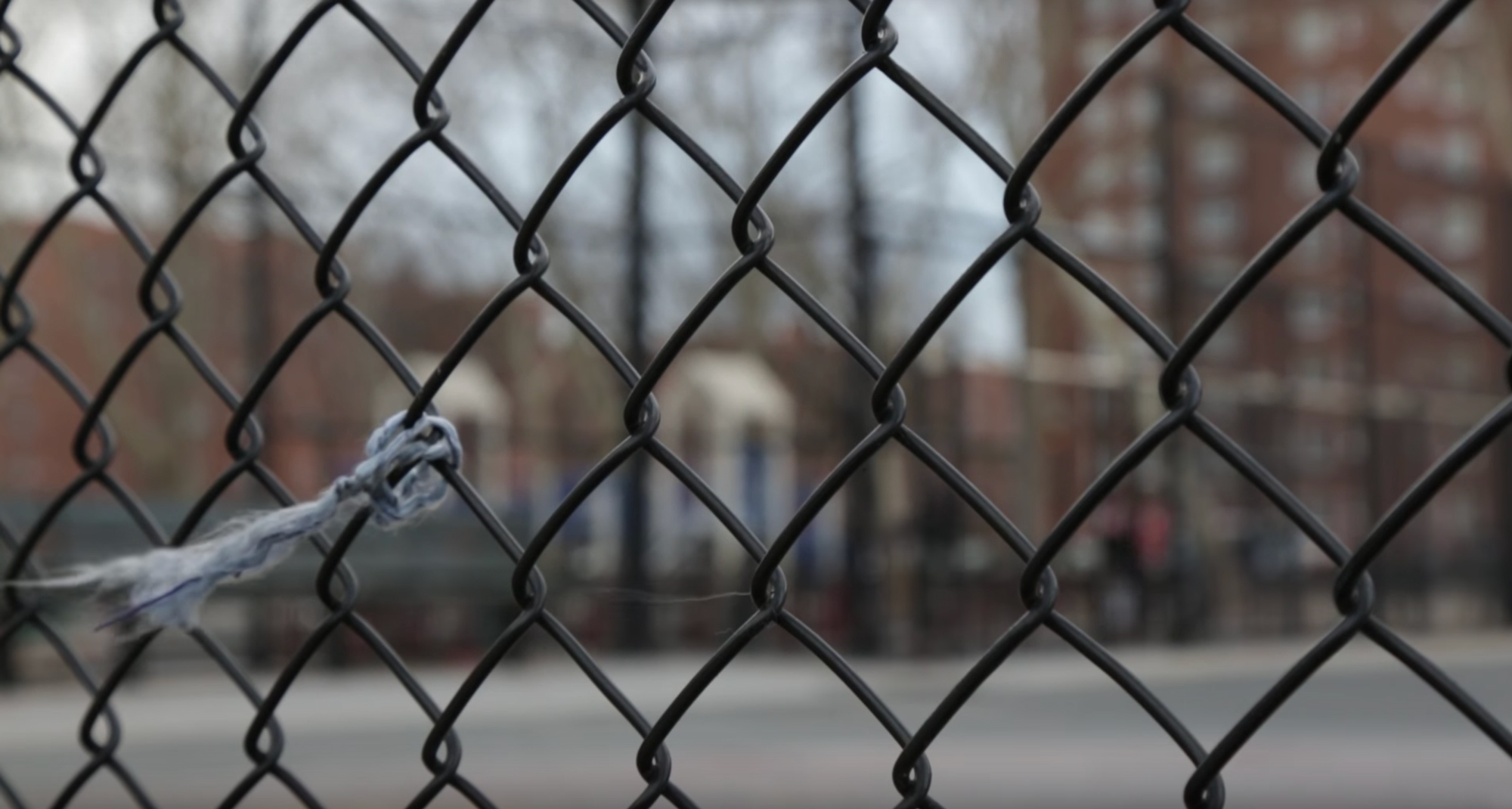
Still frame from video by Upworthy
700,000+
people in the U.S. are released from federal and state prisons every year.(1)
+66%
will be rearrested for a felony or serious misdemeanor within 3 years.(2)
60%
of formerly incarcerated people are unemployed one year after release.(2)
76%
of released prisoners were rearrested within 5 years of release. (3)
85-89%
of the people are rearrested when they are unemployed. (4)
70%
of children with an incarcerated parent will follow in their parents' footsteps.(5)
$80 billion
is spent annually by the U.S. government to keep people incarcerated. (6)
________
2
Refoundry's model was tested and refined in two cities:
South Central Los Angeles and Brooklyn.
10 of the 12
participants in the program have incubated their own thriving businesses.
125+
people from the incubated businesses' communities, many of them formerly incarcerated, are now employed.
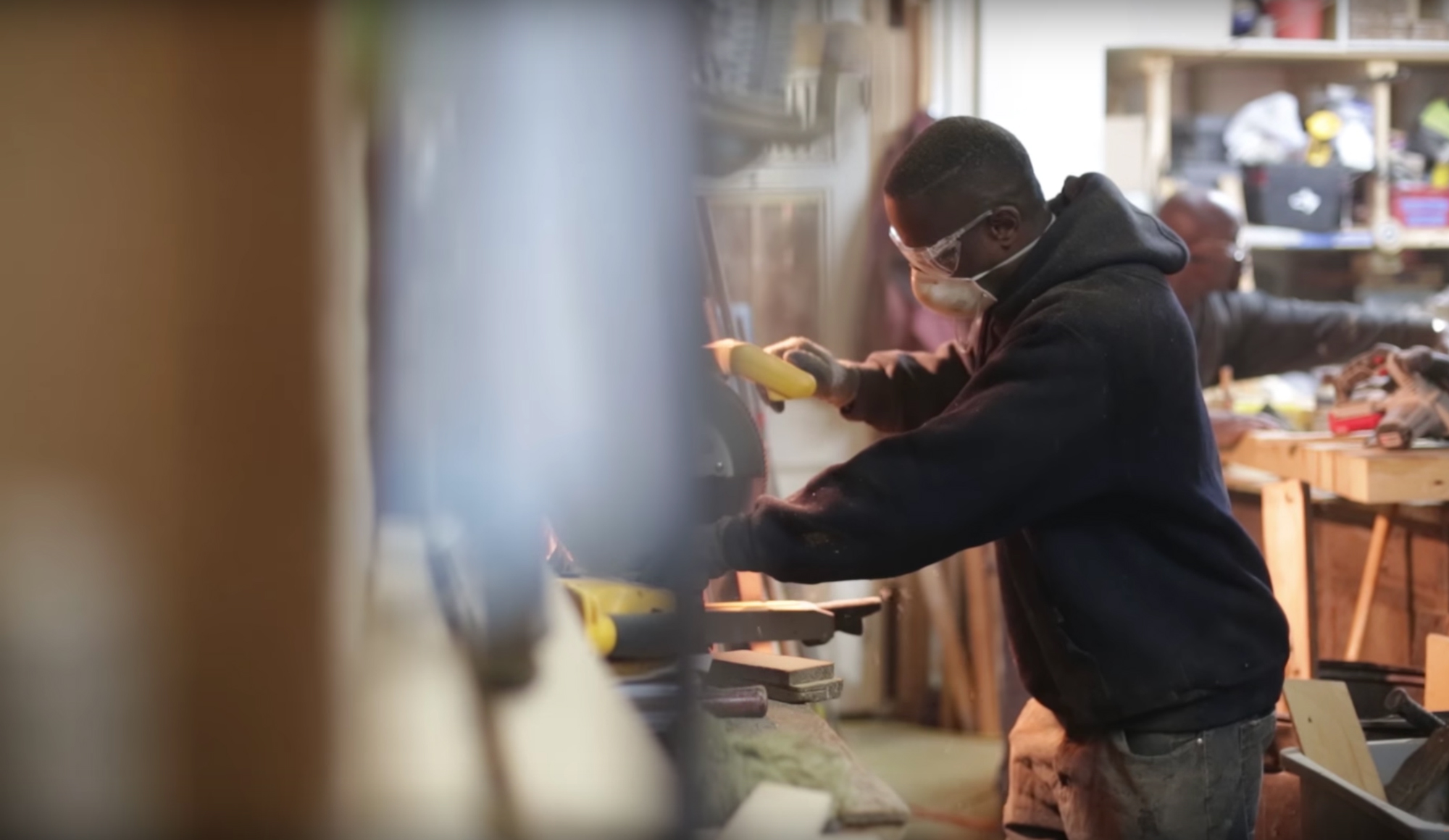
Photo: Bryan Coppede
Refoundry was born as a response to a needed change. What unresolved problems compelled you to launch the project?
TOMMY SAFIAN__Back in the 70s when I was a kid, there were about 350,000 people in prison. Now, there are 2.2 million. The demographics of the incarcerated population at that time looked relatively similar to the demographics of the U.S. in terms of race and class. Now, it's mostly poor people of color, and if you're a black male under 30, you have 20% chance of going to prison.
There are various reasons for this significant spike. In my opinion, it has much to do with the perceptions that drive our laws. There are also policing, sentencing, bail reform, and parole problems throughout the criminal justice system. Unfortunately, due to a high recidivism (the tendency of a convicted person to reoffend) rate, even if no new person comes into the criminal justice system, it would still take five years to cut our incarcerated population in half. In our opinion, mass incarceration is a symptom of a bigger problem that we're trying to address.
CISCO PINEDO__Today, the reality is that mass incarceration has increased criminality. People who have committed crimes do not feel they belong anywhere. So they'd rather commit another crime and go back to prison where they feel comfortable.
For 28 years, I've been working with people coming out of incarceration for my private sector business in inner city Los Angeles. I interact with over 200 workers every day, and what I noticed are the common human needs that transcend differences in levels of affluence and lifestyles. We all want to be valued for the work we do and have a "craft" that fosters our sense of pride and affirms our place in society. That sense of belonging is more critical than anything else.
The problems and issues in the criminal justice sector are things that Tommy and I started to identify and understand while consulting for a nonprofit that operates in re-entry and workforce development. We realized that no one was doing anything to fix the core problem. Instead, everyone was offering quick and easy solutions to job creation, such as working in fast-food restaurants. No one was really providing a sustainable career that leads to economic security.
That is why we started Refoundry which applies the model I have employed in the private sector, with a goal to scale it up nationally by teaching others how to do things independently in their own cities.
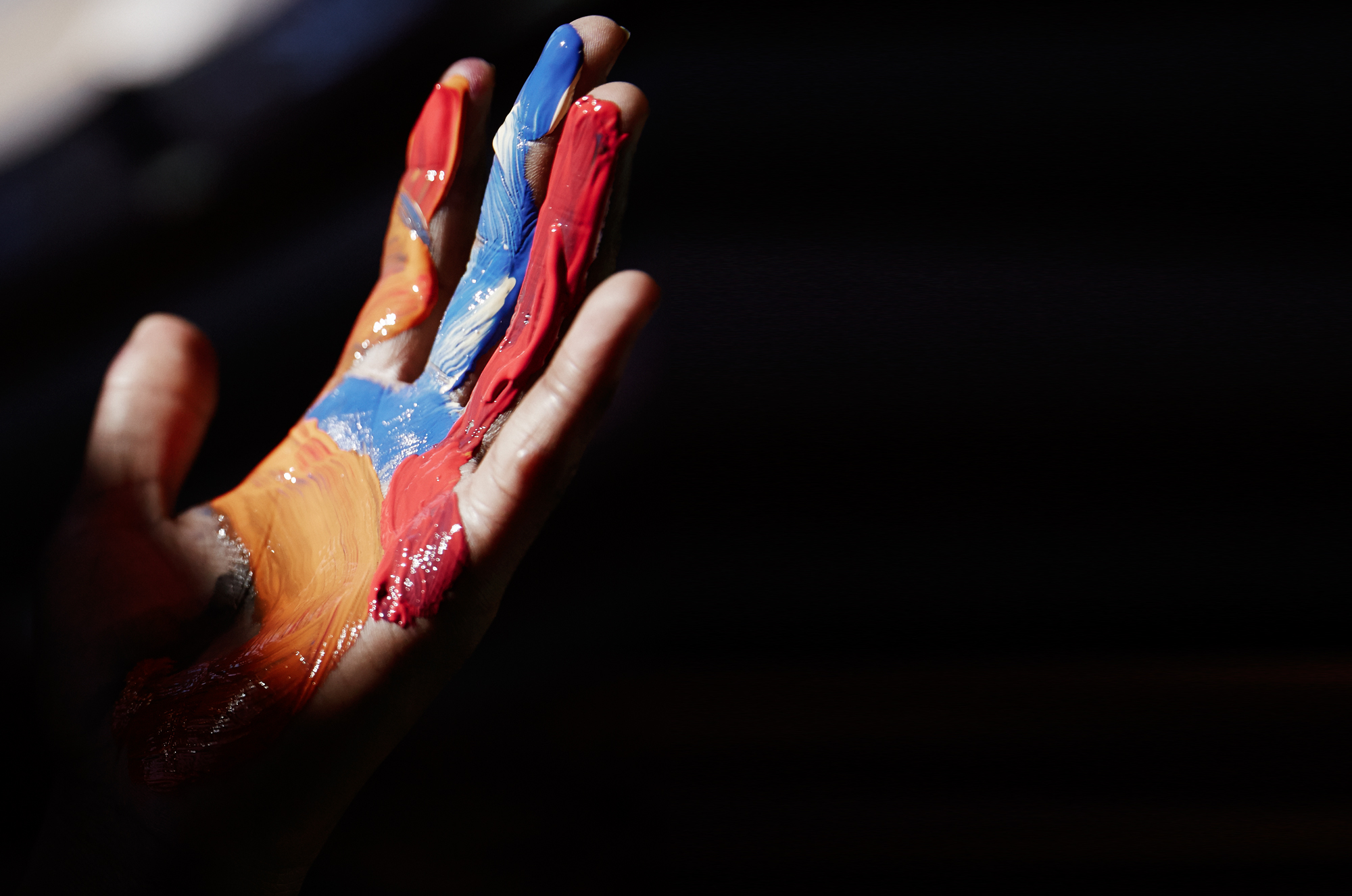
Photo: Bryan Coppede
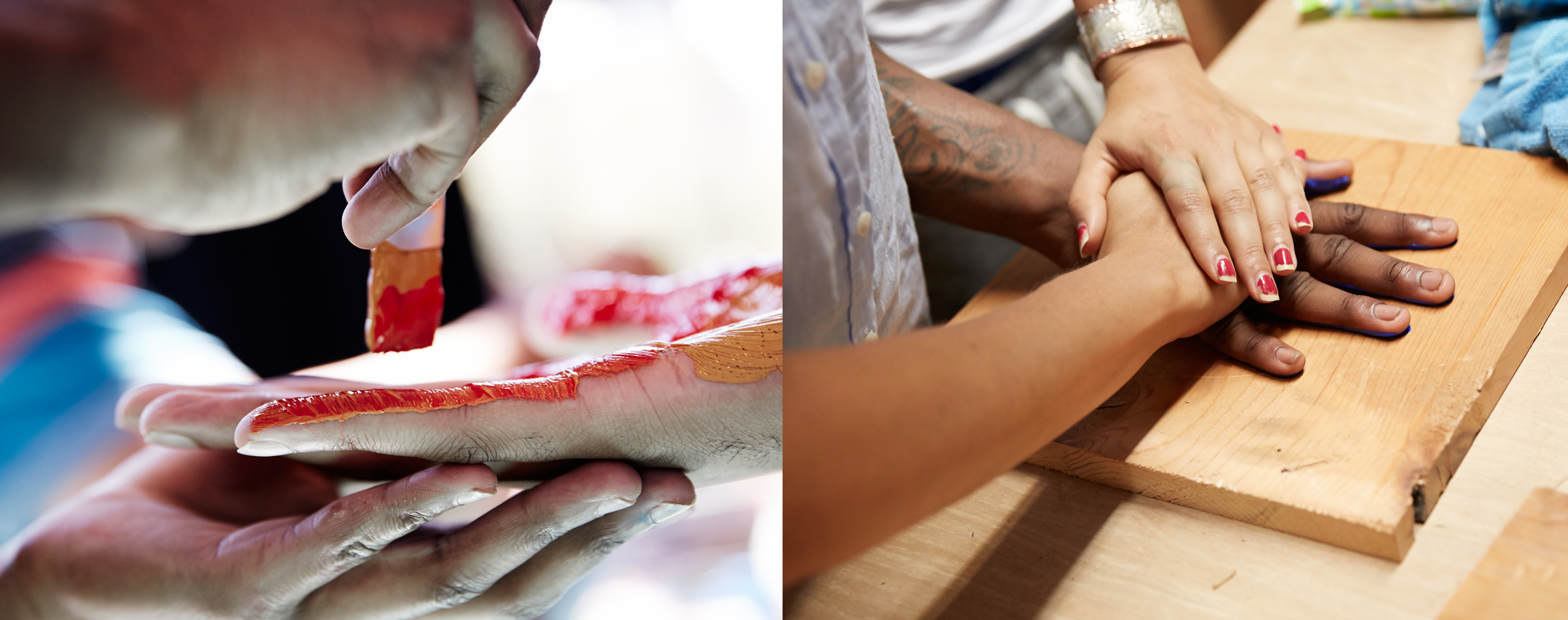
Photo: Bryan Coppede
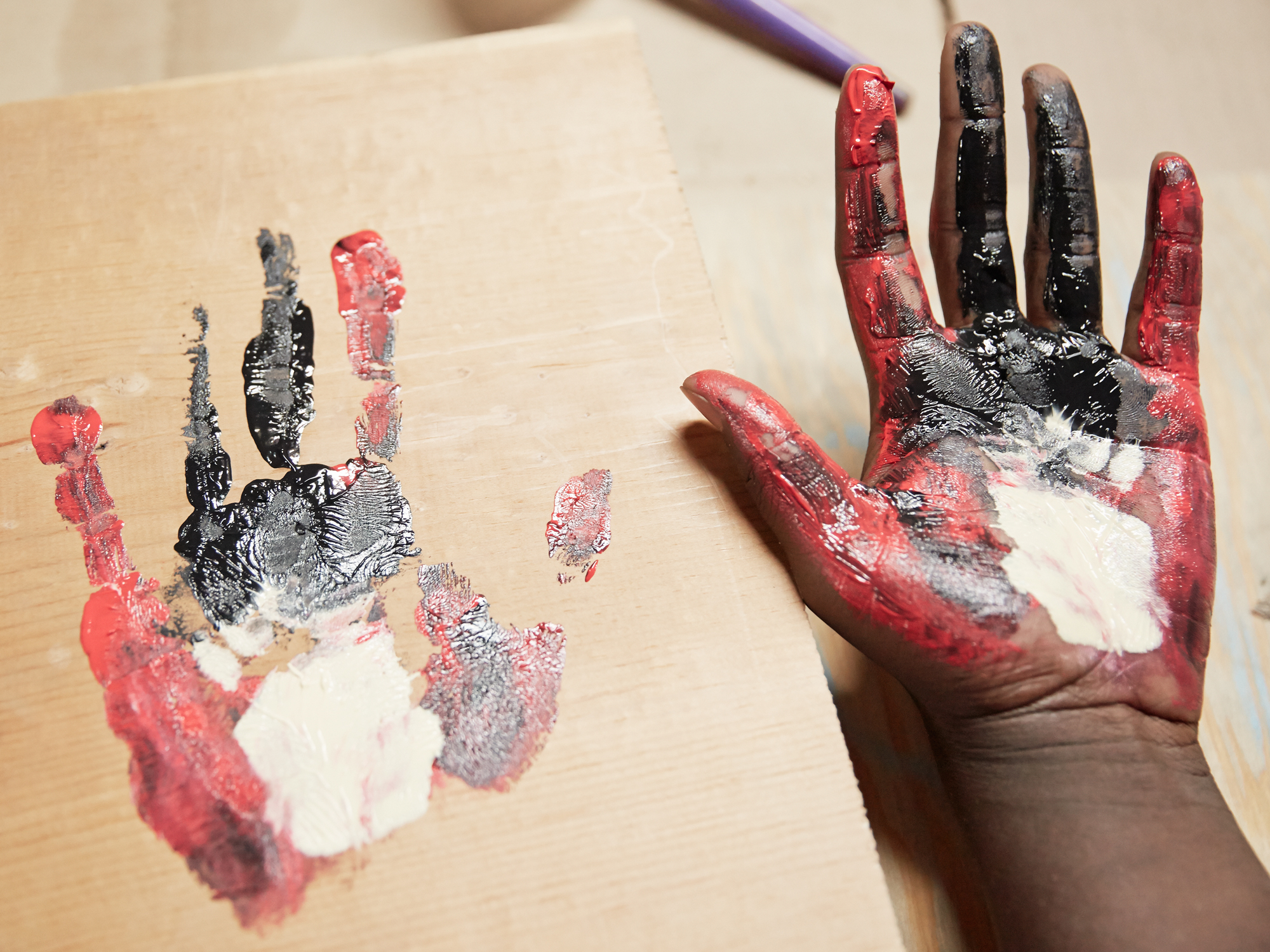
More than 50 million Americans have a criminal record. When arrested, their hands are "printed" for identification. In this way the state coopts identity and brands those individuals as criminals for life, disseminating that "record" through our society in ways that create barriers to employment, housing, and essential services for millions of our fellow citizens. Refoundry's Hand-in-Hand(TM)
initiative is designed to contrast and transform this process, creating a new experience and association with hand-printing – one that's positive, creative, and industrious, and which allows formerly incarcerated and other marginalized people to reclaim their identity and sef-agency while embracing, and being embraced by, the wider community. It's a public art initiative in which people from across our city have their hands painted and paint the hands of others – and imprint them on reclaimed pieces of pine for inclusion in public artwork and exhibits. Signing our names and dating these pieces, preserves a record of this process – in contrast to the criminal "record" with which tens of millions of Americans are often stigmatized, both in and out of prison. ( Text courtesy of Refoundry / Photo: Bryan Coppede )
Valued,
and
Part of Society”
Why have you chosen craft to instill self-sufficiency for people coming out of incarceration? Why is craft important?
TS__Every person has creativity, industry, and purpose. When people have access to that, they thrive. Also, craft cannot be replaced by automation. Almost every job that people are being trained for when they come home from prison (for which we pay billions of dollars in taxes), is going to be obsolete in five to ten years.
Craft is very personal. And, it is also tied to commerce. When people send their objects into the world, they are sending a part of themselves with it and are therefore part of that transaction. In a "transaction," there is recognition of mutual value. When this happens hand-to-hand and face-to-face between people who normally do not have contact points in our society, and have denigrating stereotypical views of each other, it opens up this space for mutual recognition of values, shared goals, and empathy—all building blocks of community.
Our participants are being approached as craftspeople instead of ex-offenders or ex-felons.
CP__For example, Gene Manigo had been in and out of prison as a young man and had served 30 years for murder. He was one of the guys we trained. He goes to the flea market to sell his creations and all of a sudden, people are coming to him and saying, "Wow, this table is amazing."
He has never heard such words for something he has done
Once, he made a dining table for a very affluent client whom he met at the flea market. When he went to deliver the piece to the client's luxury penthouse, he was so happy to see his creation in an environment he normally does not have access to. Furthermore, the client invited Gene and his wife to dinner to christen the table with them.
TS__How many existing inclusion programs manage to close the gap between two such contrasting social classes?
CP__We have lost that common thread that helps us to interact with one another as a society. We have created islands by dividing through gender, race, position, and beliefs. But craftsmanship has the potential to help transcend these barriers because it allows all levels of society to interact and be part of each other's lives. Mass production eliminated that connection between the makers and the people who needed those products, but crafts can regenerate that connection.
Besides environmental responsibility, what is the thinking behind repurposing discarded materials?
TS__First of all, they are available. Secondly, they're less expensive. But there's another more emotional layer: Our participants often feel discarded both by society and themselves.
So when they take materials that others say have no value and then infuse creativity, industry and purpose to create something of value, it becomes very personal and visceral. They send those things out into the world, and when they see people who they usually thought looked down on them as dregs of society purchase those pieces and bring them into their lives and their homes, they say they feel "seen, valued, and part of society."
CP__90% of the discarded materials that we collect come from the streets and construction site dumpsters. Another reason for using discarded materials is to help them realize that there are no limitations and to teach them how to be resourceful.
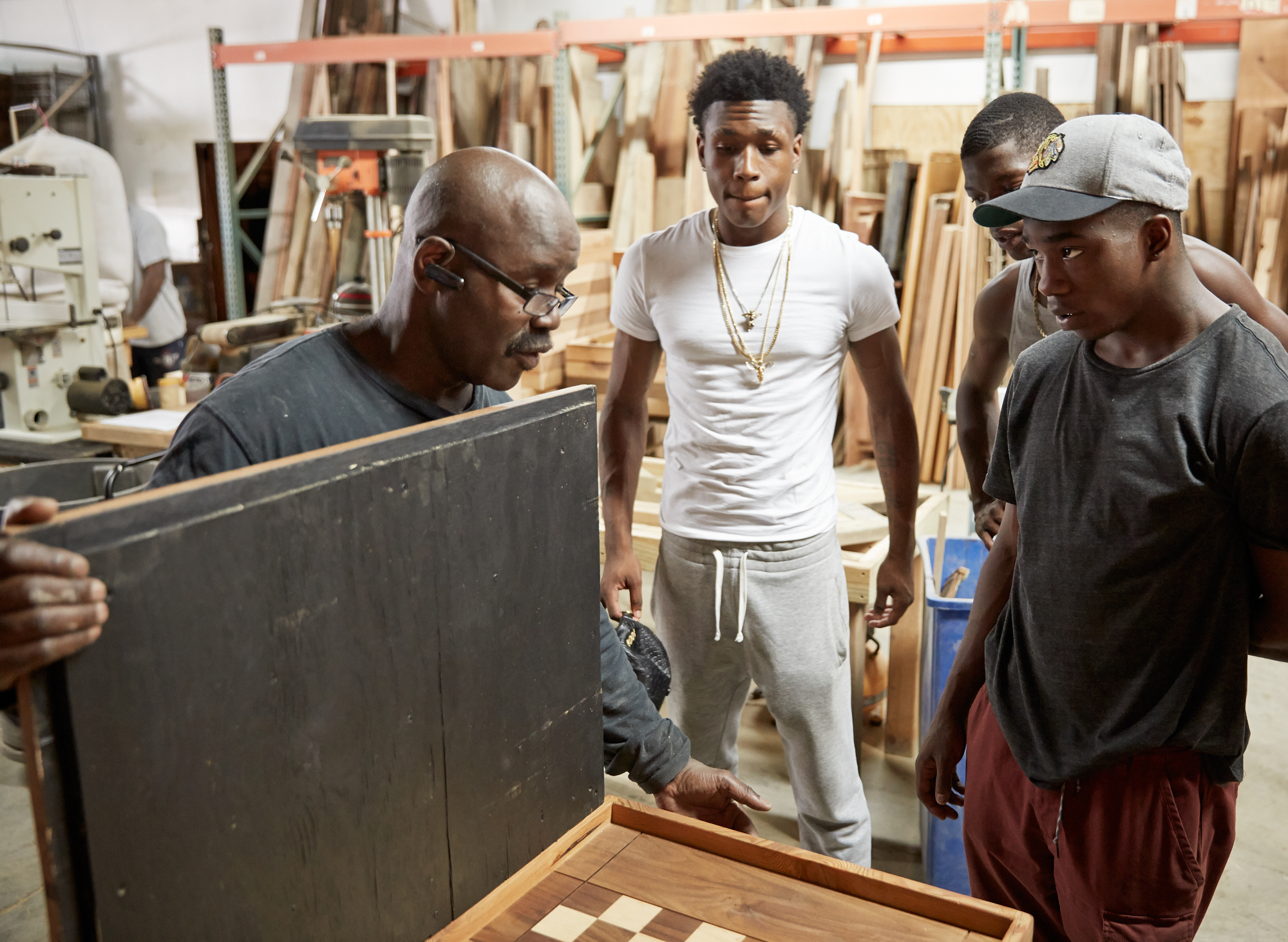
Gene Manigo teaching. Photo: Bryan Coppede
Beliefs
and Narratives
What they really need are opportunities.
Without opportunities,
they don't have inclusion.
What difficulties do the men coming out of incarceration face?
TS__They lose their identity, a sense of belonging, and self-awareness. They've been broken emotionally, socially and financially. They have dreams like everyone else, but they have hit a very low level and have a criminal record. Society tells them their votes do not count, they do not count, and therefore they are no longer part of society. In essence, this is the scar left by the criminal justice system, and there's something wrong with this model.
What problems in the current criminal justice system reinforce recidivism?
TS__The root of the problem really lies in our system. And this is what we found:
Misplaced investment: A lot of institutional funders mandate "rapid attachment" which means getting people into jobs as quickly as possible. It sounds good from the outset but there are major oversights. Can you imagine what kinds of jobs people get when there are 650,000 in one pool, with no assessment of skills, talent, experience, or education, and a woefully brief job training? Short-term, low-skill, low-wage jobs that impede financial independence.
Wasted resource: When people are in prison, their time is wasted. The system doesn't prepare people who are coming back into our communities with tools to take advantage of opportunities.
Artificial barriers: Parole restrictions limit people coming out of prisons as to where they can work, live, and the types of jobs they can have.
Erroneous beliefs and narratives: We harbor erroneous beliefs that people coming out of incarceration are deficient and unable to integrate into society. Many organizations believe that they have terrible barriers to reentry and employment. Well, if you present the narrative in these terms, it becomes self-fulfilling. We are all works-in-progress, so who are we to say that someone needs "rehabilitation?"
What they really need are "opportunities." Without opportunities, they don't have inclusion. Incarcerated people are expected to hold accountability for their crimes; our society and the criminal justice system also have to be accountable for promoting their inclusion when they come back home, which is something we don't do.
How has this insight helped to identify the critical issues that Refoundry aims to address, and how has it shaped its craft-focused program?
TS__Criminal justice is an issue of economic justice. 80% of people in prison come from communities that are disadvantaged or underserved. Most people are in prison because they did not operate within the legal economy to get what they needed.
So the real need is economic opportunities for people to pursue their passion, talents, and aspirations to maximize their potential, not to sweep floors or pick up garbage. To get up every morning and get excited to go to work is what we all want. That includes manual labor, which can be very satisfying and fulfilling. Society relies on it, so it should be honored with a commensurate living wage.
Refoundry is working to instill education, which by far is the best preparation and pathway to being financially secure and a productive member of our society. However, education, as most people define it, is long and costly. So when you have people coming out of prison who lack that, how do you provide that education affordably, efficiently and effectively? In our opinion, it's through craft.
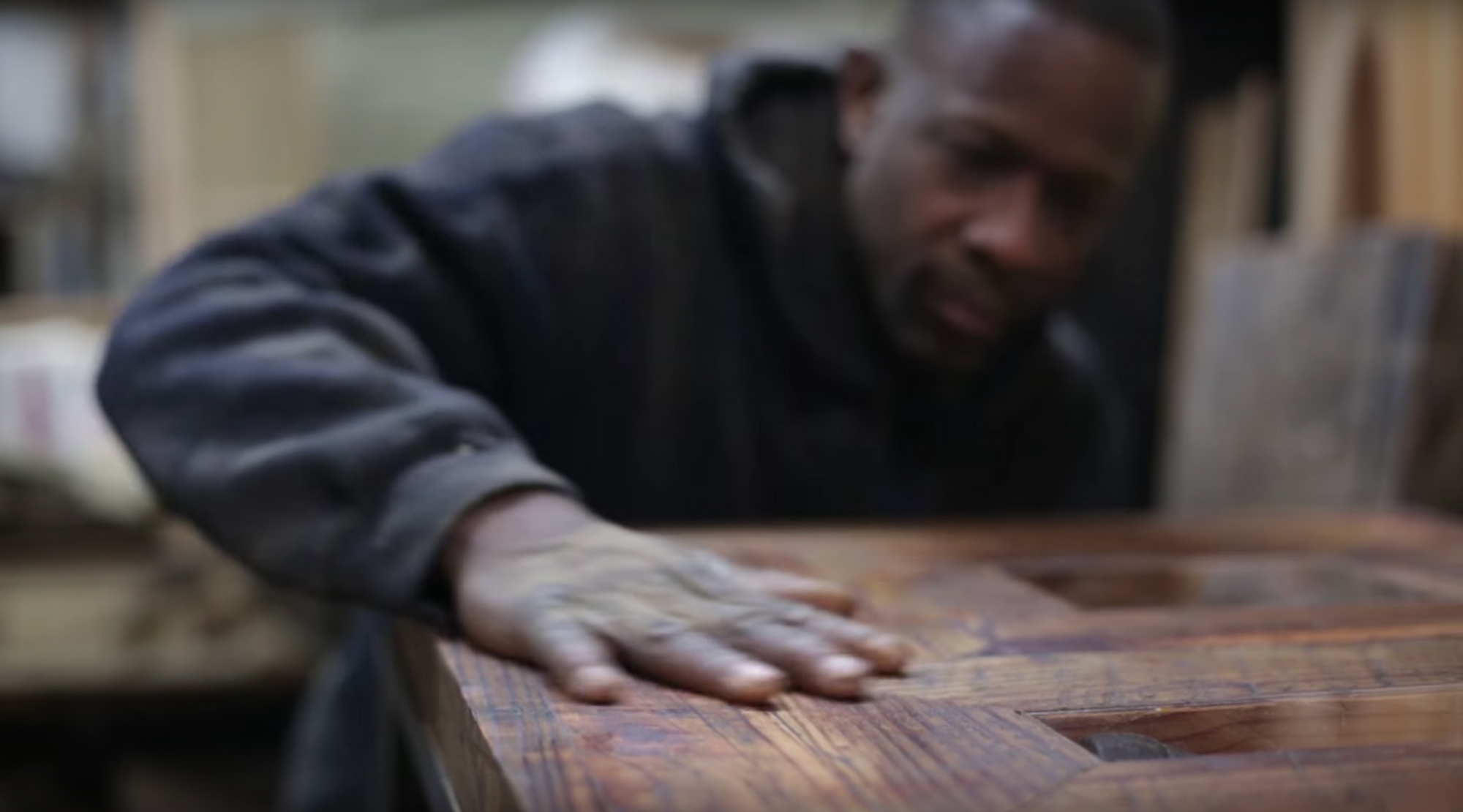
Still frame from video by Upworthy
to Independence
How does Refoundry's program work?
CP__People go through an 18-month program during which they're paid regular salaries and given a space to work. First we help them learn the trade of being a craftsman and an entrepreneur. We expose them to finding objects and discarded raw materials from the streets, bringing them to the shop, and helping them design and build the products themselves. We then take them to the flea market and teach them how to sell to consumers.
It's a whole process from A to Z. The idea is that by the end of the first six months, they will have understood whether or not this is what they want to do. And for those with the drive to do it, we will have identified the skills they need to succeed. We then take them through a more in-depth process, such as focusing on the product line and creating business plans.
During the third six-month period, they move toward independence. We start to scale back the salary as they start generating their own income through sales, and we coach them on managing that income. Then, we help them find their own space to start their own business. So this is the final component of the program where their business model starts kicking in and they transition into full independence. They don't have to look for another job; they can continue building relationships and market and sell the products they're making.
People that have transitioned into their own businesses from my company normally took three to five years to become fully independent. But we're trying to compress that timeframe to 18 months so that the program can rotate in new people on a much bigger scale.
The seven people we put through our pilot program in Los Angeles ended up employing over 125 people combined. What we have done with Refoundry is apply that private-sector program model to a nonprofit in order to scale it up in a much bigger way. If we trained seven people and ended up with 125 employees, imagine what would happen if we trained 70!
Ultimately, it's not the lack of talent. Rather, it's the lack of resources or well-routed allocation of resources that hinders the potential for an exponential scaling effect.

Refoundry's work impacts our society at large.
For those wishing to make tax-deductible donation, please visit:
https://www.refoundry.org/donate

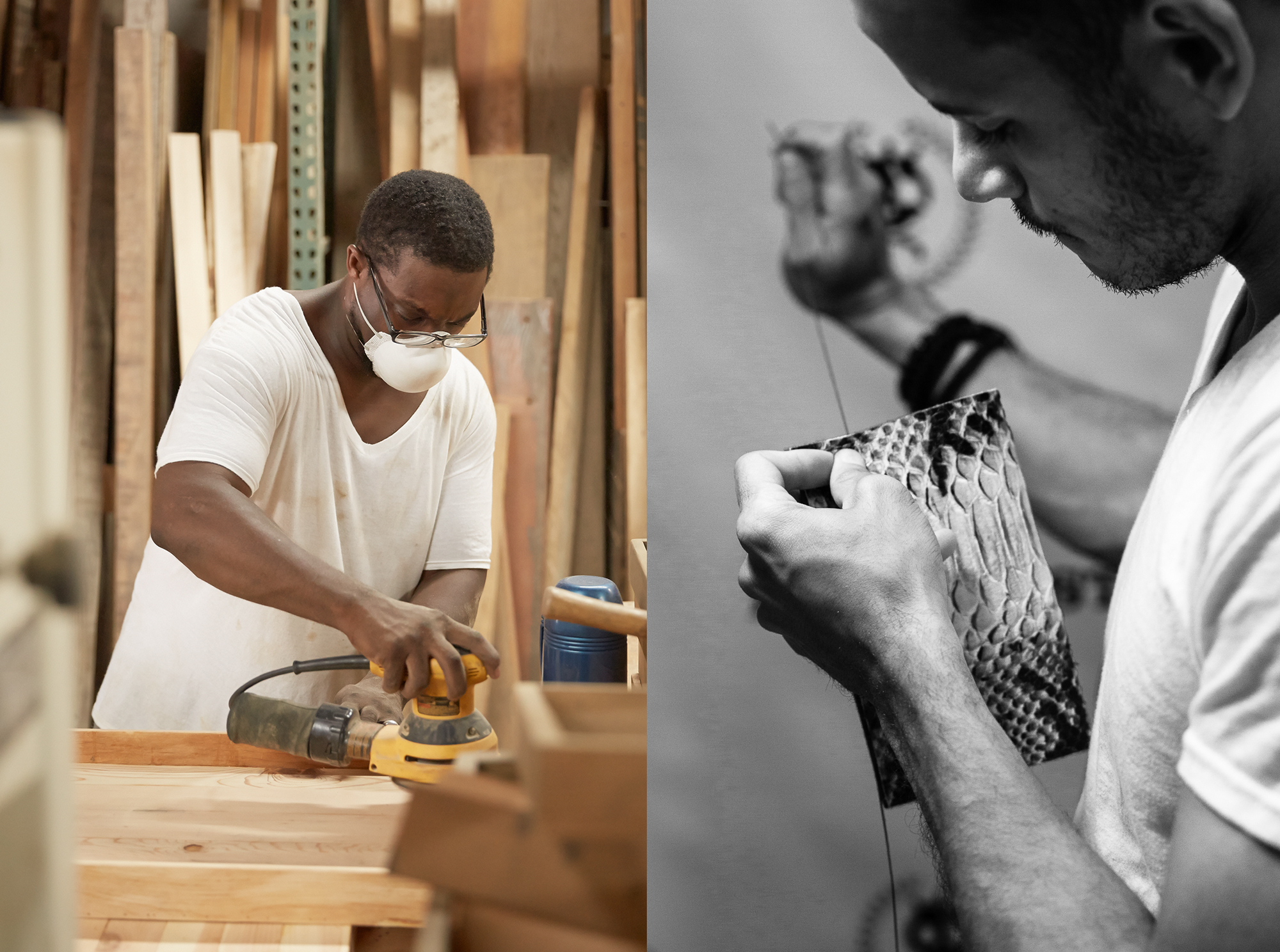
(Left) James L. Eleby, Jr. (Right) Ralphy Dominguez. Photo: Bryan Coppede
Having a skillset is a fundamental step to social inclusion. But learning basic life skills is a mandatory preliminary step. How does that work?
CP__In both of our pilots, we partnered with organizations like Homeboy Industries in LA and Fortune Society in NYC that provide different -- and complementary --services to people immediately upon release from prison: for example, addiction and trauma counseling, basic life skills, and coping with other barriers to successful integration back into society. Refoundry has recruited from these organizations' graduates quite successfully. We don't typically take on 16 to 24-year-olds because we have found that entrepreneurial training like ours requires a certain level of maturity. That is why our success rate has been so high: our participants, who are on average 35 or older, are highly motivated and ready for a rigorous 18-month program.
How is Refoundry advocating for social inclusion?
TS__We're providing a new model that demonstrates that if you provide people with access, opportunities, and tools to support their aspirations, it yields a better outcome that is quicker, less expensive, more effective and sustainable.
Our program is not for everyone coming out of prison. We need different programs to meet the diverse needs and the talents of people and to help them recognize, develop and monetize their talent so that it is sustainable. We're also training people on business principles that help them to articulate how they can bring value to businesses and employers, rather than positioning themselves as "job seekers".
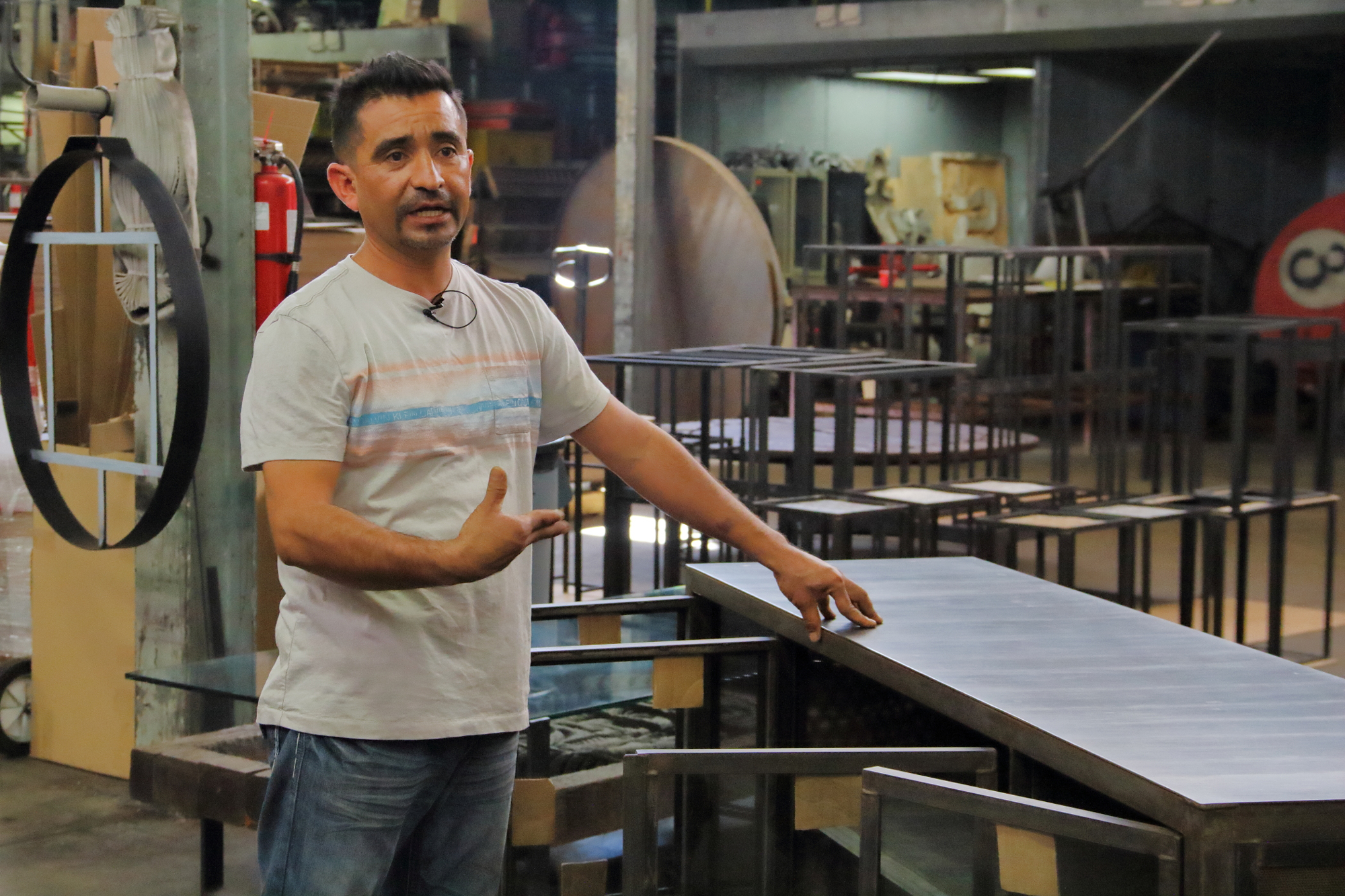
Conan Castillo in the shop. Photo: Bryan Coppede
We all love success stories. How has Refoundry's pilot program impacted the men who partook in it?
CP__Gene Manigo, mentioned earlier on, now has his business Kambui Custom Craft, and is selling goods at the flea market. Dexter Nurse, at the end was not making furniture. He's more of an intellectual who read a lot while in prison. We actually got him accepted into Columbia University's Graduate School for Social Work. He wants to be help people impacted by our criminal justice system.
There are also two other men, Ralphy Dominguez and Walter Escobar who are now making leather goods in the Bronx. The mother of one of them was a seamstress. When he came out of prison, he realized that was a real asset because his mother actually had a craft. So he came up with a business plan and we helped him open a little shop called Pen & Pistol that makes leather goods. In my company, we end up with a lot of leather scraps from our furniture making, which we donate to them. And now they have their products in West Elm stores.
In LA, Conan Castillo started as a handyman making $14/hour and now has his own business (Al's Furniture) that hit $2 million is sales last year!
That leads to the notion of "measured impact," which can tend to be a limited and distorted barometer for measuring success. How do you measure your impact?
CP__In the private sector program from which Refoundry was fashioned, some of the guys started out in my company sweeping floors. These people came from nothing and only had high school degrees. Now they have their kids in private schools, they're homeowners, they're providing jobs for others, and they feel committed to their community.
When Tommy and I founded Refoundry, they all wanted to pitch in and be involved. Why? Because they saw how beneficial it was to them and they wanted to help others do the same. I feel like I have this mini army who are ready to conquer and make a change once we're ready for Refoundry V2. For me, that's the marker for success. Not only have the people I've supported in the past 10 to 15 years provided better lives for their families and community, they want to do good for society.
TS__Building esteem and value, opening up opportunities for people. That's what works, that's the value behind our program. It's also about qualitative impact.
We have to look at measuring things in a different way. Data is not always objective. It depends on who, what, and how. We spend trillions of dollars a year on criminal justice. Yet, recidivism rates have remained flat for decades.
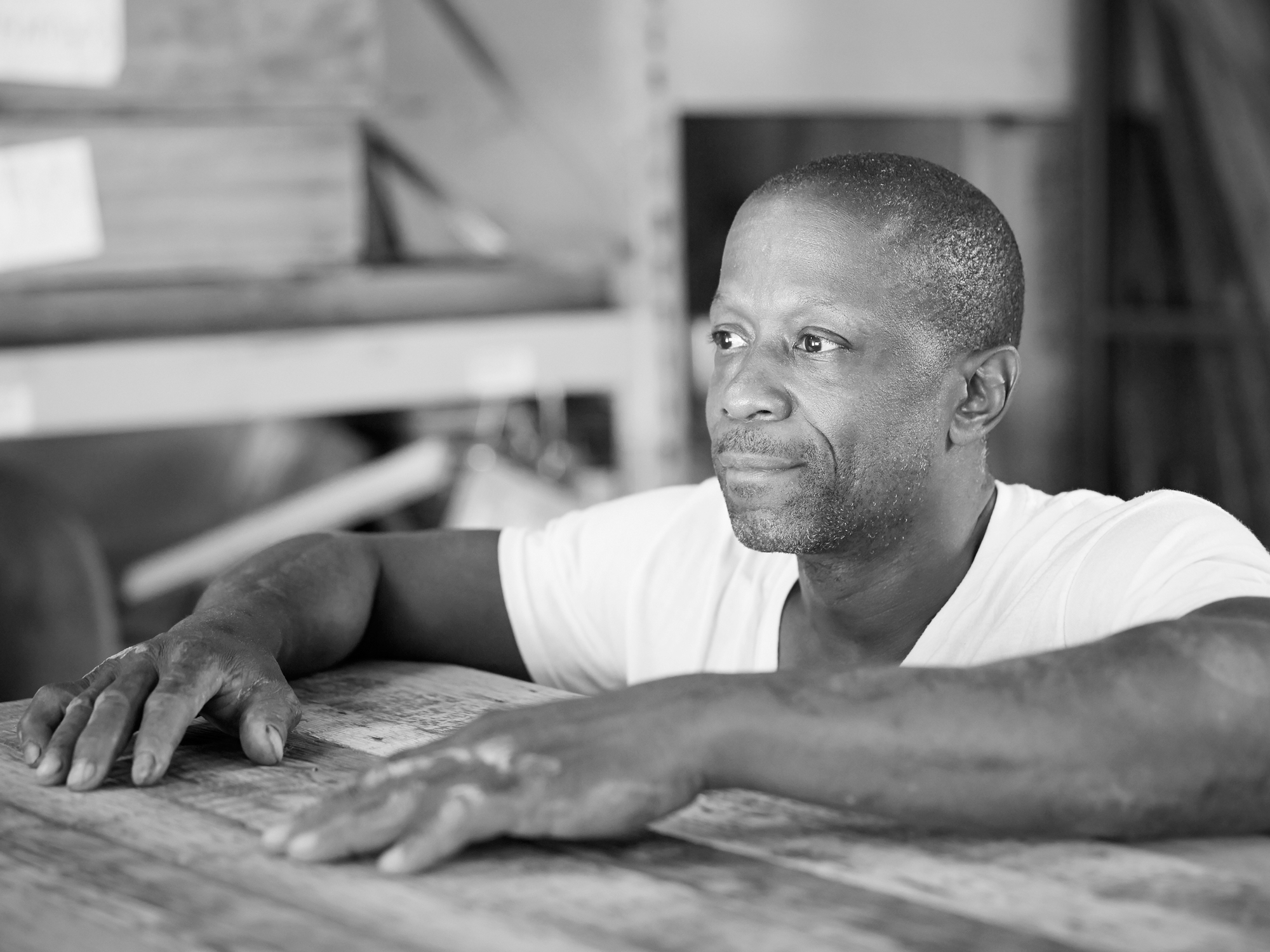
James L. Eleby, Jr. Photo: Bryan Coppede
What are the challenges that lie ahead for Refoundry? What is your vision for the future?
CP__For us, it's really about staying on mission and continuing to talk to people about the big problem that we have, that we need to do something about it. If we didn't have to train people, we would have a full-time job just advocating for change. And that's what we've done for the most part.
The challenge is really how to scale up in order to create a true impact in the criminal justice system. Our next big milestone is to start training 60 to 80 people a year in Brooklyn so that in three to four years we can train 500 people a year and in ten years bring more than 5,000 people into the program. A program that works is scalable.

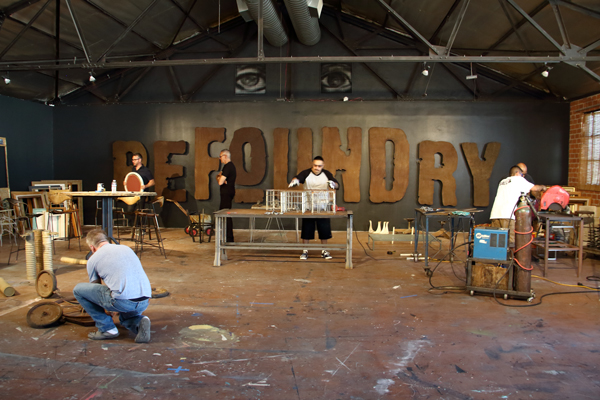
Photo: Dignicraft
Refoundry is a US-based 501(c)(3) nonprofit organization that aims to lower the 2.2 million US prison population and 75% recidivism rate by helping people coming home from prison acquire skills and knowledge that will help them transform their lives and become leaders and economic engines in their communities. It trains formerly incarcerated people to repurpose discarded materials into home furnishings and mentors them into their own business and/or career path. As part of the curriculum, it provides transitional services, life skills training, financial education, and business principles.
Photographers and Filmmakers:
Bryan Coppede: bryancoppede.com, Upworthy: www.upworthy.com, Dignicraft: www.dignicraft.org
Mona Kim is the Founder and Curator of Moowon magazine. As the Creative Director of award-winning multidisciplinary design studio, Mona Kim Projects, she has been conceiving public space experiences and large-scale experiential projects for global brands and cultural institutions. Her museum and exhibition design for the Canadian Museum of Human Rights, World Expo, Museum of Tomorrow (Museu do Amanhã), and UNESCO-sponsored projects, gave her the opportunity to document and be exposed to some of the most distinctive examples of social realities and cultural expressions. On these projects, she had co-curated world issues such as endangered languages, cultural diversity and sustainability. The Moowon project is an extension of this background. Her work has been featured in The New York Times, WWD(Women's Wear Daily), The Creative Review, and in publications by Gestalten and The Art Institute of Chicago.

REFERENCES:
(1) West HC, Sabol WJ, Greenman SJ. Prisoners in 2009 Bureau of Justice Statistics Bulletin. Washington DC: Bureau of Justice Statistics; 2010. (2) H.R. 1593–110th Congress: Second Chance Act of 2007." www.GovTrack.us. 2007. August 27, 2013. (3) Durose, Matthew R., Alexia D. Cooper, and Howard N. Snyder, Recidivism of Prisoners Released in 30 States in 2005: Patterns from 2005 to 2010 (pdf, 31 pages), Bureau of Justice Statistics Special Report, April 2014, NCJ 244205. (4) National Institute of Corrections. (5) Mosely, E. (2008). Incarcerated – Children of Parents in Prison Impacted. Texas Department of Criminal Justice: GO KIDS. www.tdcj.state.tx.us (6) Whitehouse.gov
EDITING: COPYRIGHT © MOOWON MAGAZINE /MONA KIM
TEXT: COPYRIGHT © MOOWON / MONA KIM PROJECTS. ALL RIGHTS RESERVED.|
PHOTOS, VIDEOS STILLS: COPYRIGHT © BRYAN COPPEDE. © UPWORTHY. © DIGNICRAFT. ALL RIGHTS RESERVED.
TO ACQUIRE USAGE RIGHTS, PLEASE CONTACT US at HELLO@MOOWON.COM
